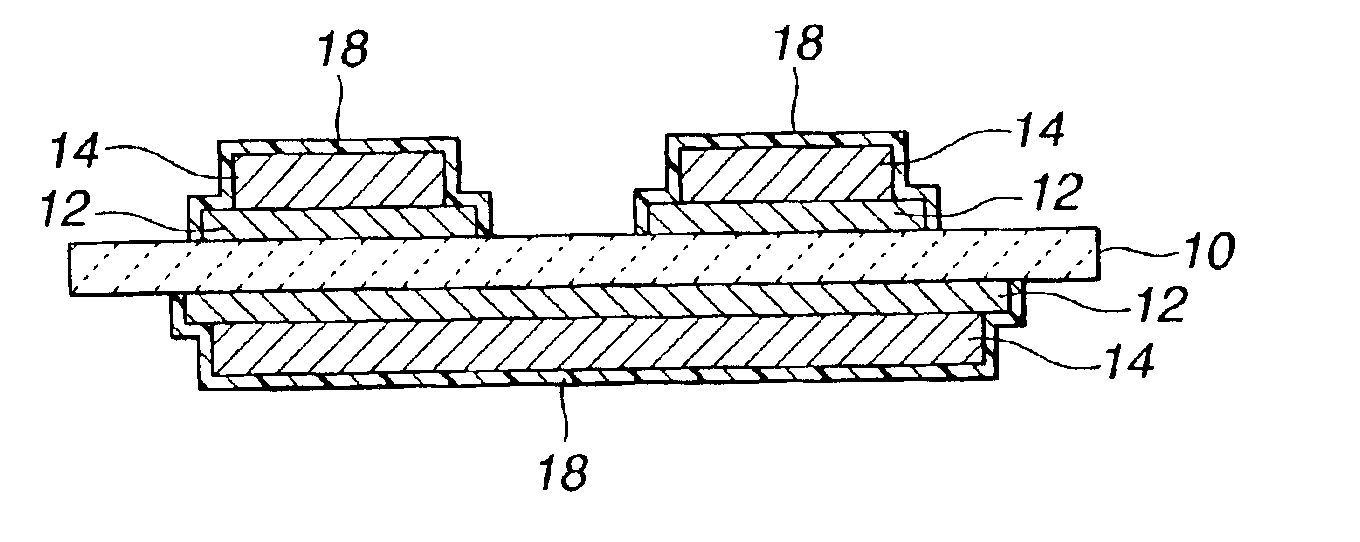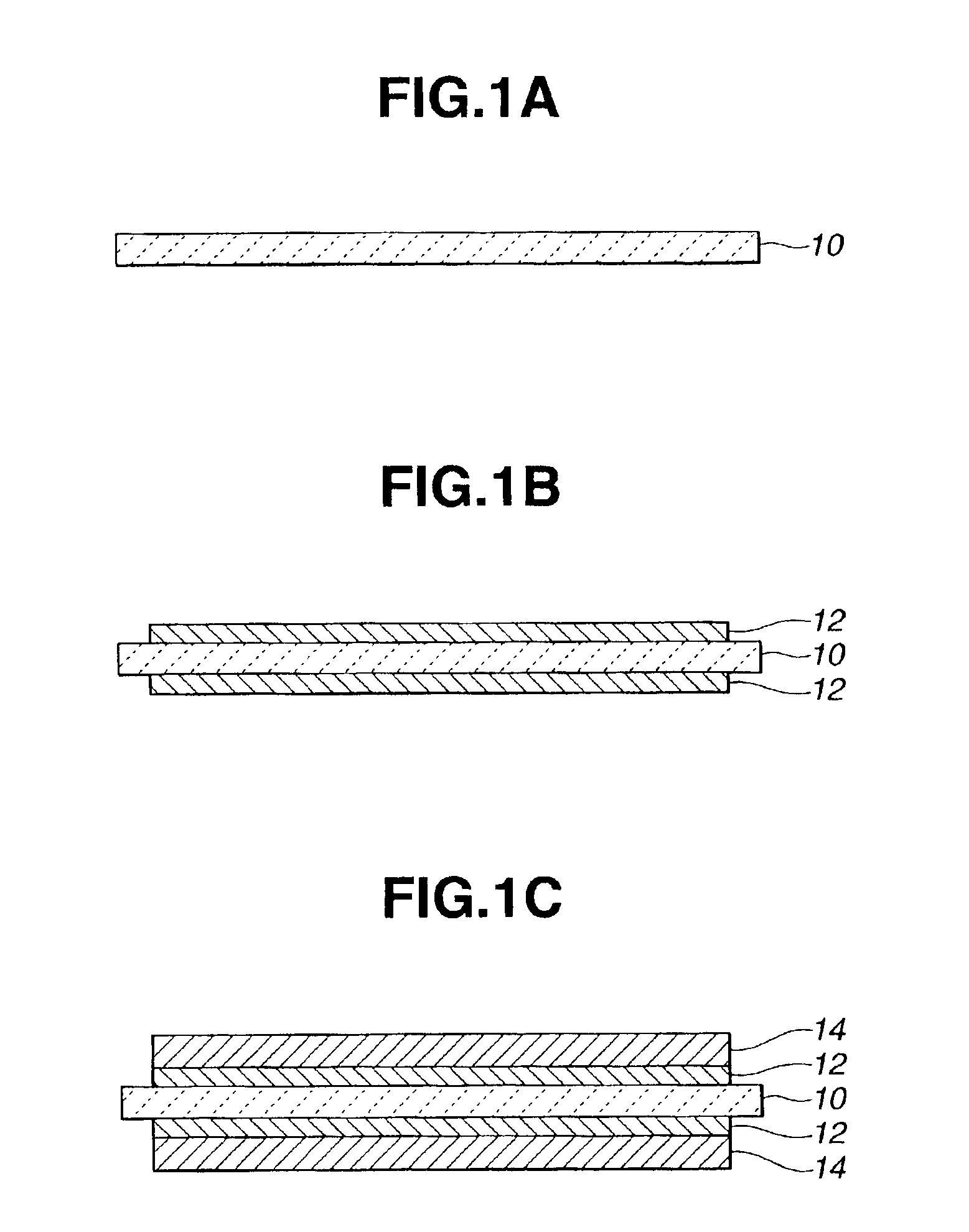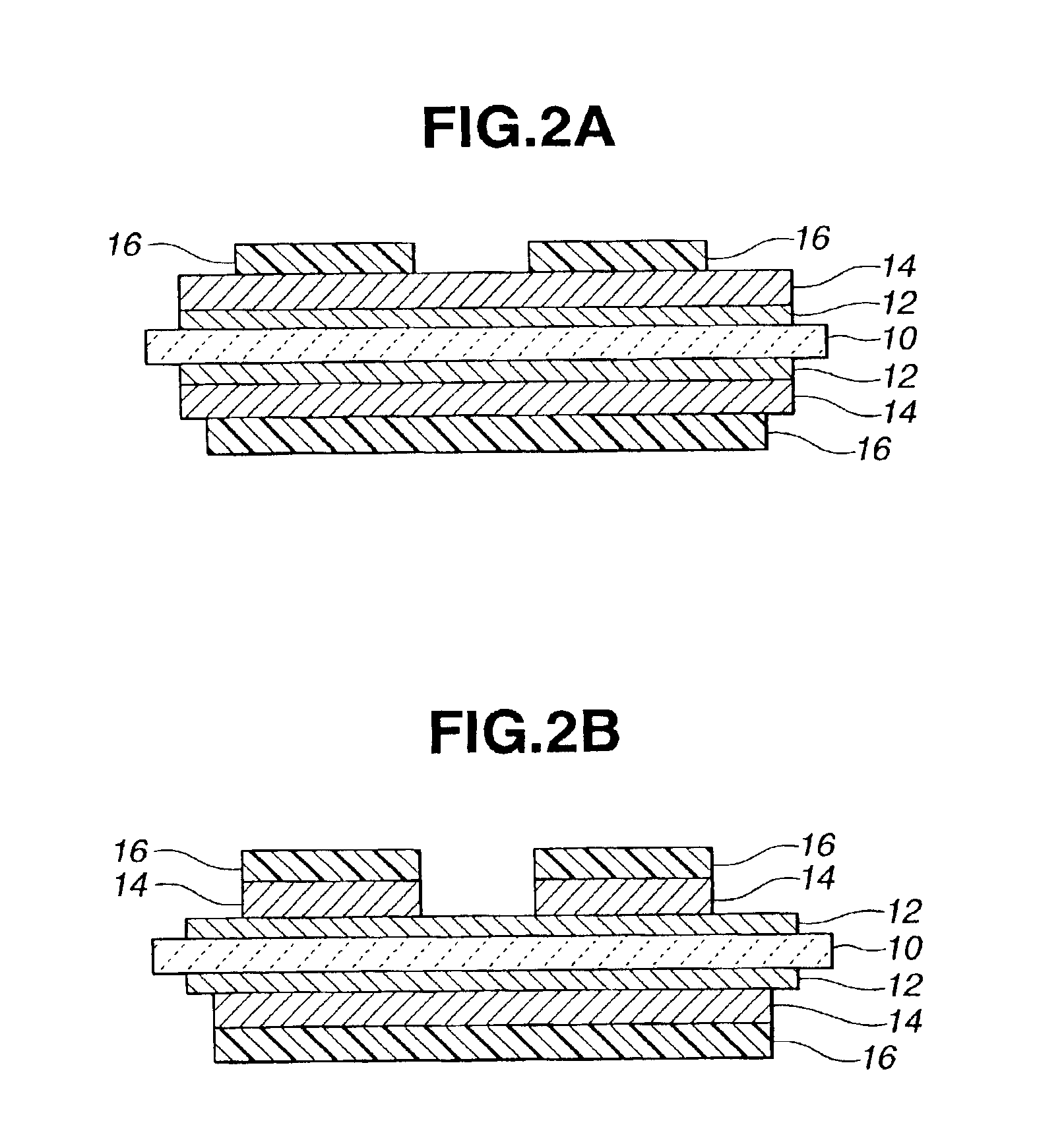Method for producing metal/ceramic bonding circuit board
a technology of metal/ceramic bonding and circuit board, which is applied in the direction of insulating substrate metal adhesion improvement, manufacturing tools, solventing apparatus, etc., can solve the problems of high cost, large number of processes, and inability to meet, and achieves low cost, small number of steps, and easy control of the sectional shape of metal/ceramic bonding circuit board
- Summary
- Abstract
- Description
- Claims
- Application Information
AI Technical Summary
Benefits of technology
Problems solved by technology
Method used
Image
Examples
example 1
[0051]The weight of metal powder containing metal components was measured so that the components are 91 Ag—7 Cu—1.5 Ti—0.5 TiO2 (wt %). To this metal powder, about 10% of an acrylic vehicle was added. By kneading this mixture by an automatic mortar and three roll mills by a usual method, a paste-like brazing filler metal was prepared.
[0052]Then, as shown in FIGS. 1A through 1C, a ceramic substrate 10 was prepared (FIG. 1A), and the brazing filler metal 12 was applied on both sides of the ceramic substrate 10 by the screen printing (FIG. 1B). Then, copper plates 14 having a thickness of 0.3 mm were arranged on both sides thereof, and the copper plates 14 were bonded to the ceramic substrate 10 at 835° C. in a vacuum furnace. In order to verify the thickness of the brazing filler metal 12, the sample thus bonded was cut to measure the thickness of the brazing filler metal 12. As a result, the thickness of the brazing filler metal 12 was about 20 μm. As the ceramic substrate 10, an S g...
example 2
[0056]The substrate treated with the mixed solution of EDTA, aqueous hydrogen peroxide and pH regulator in Example 1 was treated with an etchant comprising copper chloride, hydrochloric acid and hydrogen peroxide again. Then, the resists were peeled off, and the Ni—P electroless plating was carried out. The brazing filler metal protruding length of the metal / ceramic bonding circuit board obtained in this example was 120 μm, and the brazing filler metal removing performance and circuit pattern performance thereof were good.
example 3
[0057]The same treatment as that in Example 2 was carried out, except that Al2O3 was used as the ceramic. The brazing filler metal protruding length of the metal / ceramic bonding circuit board obtained in this example was 120 μm, and the brazing filler metal removing performance and circuit pattern performance thereof were good.
PUM
| Property | Measurement | Unit |
|---|---|---|
| pH | aaaaa | aaaaa |
| length | aaaaa | aaaaa |
| thickness | aaaaa | aaaaa |
Abstract
Description
Claims
Application Information
 Login to View More
Login to View More - R&D
- Intellectual Property
- Life Sciences
- Materials
- Tech Scout
- Unparalleled Data Quality
- Higher Quality Content
- 60% Fewer Hallucinations
Browse by: Latest US Patents, China's latest patents, Technical Efficacy Thesaurus, Application Domain, Technology Topic, Popular Technical Reports.
© 2025 PatSnap. All rights reserved.Legal|Privacy policy|Modern Slavery Act Transparency Statement|Sitemap|About US| Contact US: help@patsnap.com



